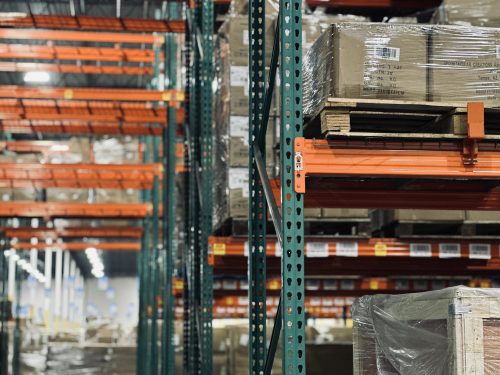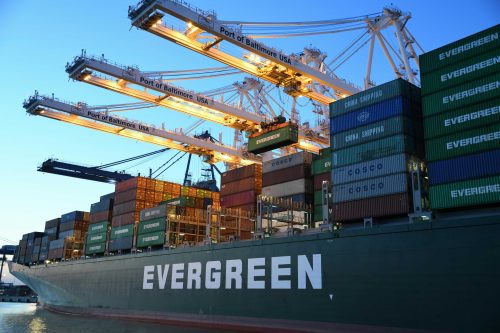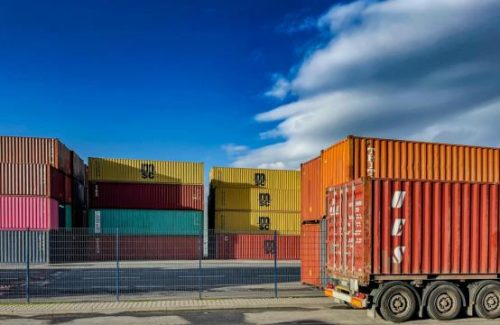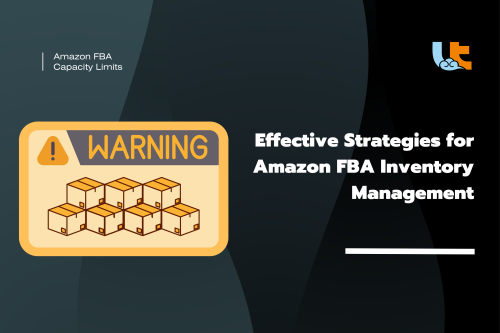
Backorders — a common inconvenience in our instant gratification society. Just as you're ready to make a purchase, you find out the item is backordered.
If you manage an ecommerce store, how can you enhance inventory management and the overall customer experience by minimizing backorders or dealing with them effectively? We'll discuss these topics and more in this guide.
What is a backorder?
A product on backorder is an item that's currently out of stock but is anticipated to be delivered by a specified date once restocked. Companies often continue selling products on backorder, promising to dispatch them to the customer once the inventory is replenished.
Backordering an item means the customer can purchase the item now and receive it at a later date when the item is restocked and ready for delivery. When an order includes a backordered item, it can't be packed or shipped immediately due to the absence of physical inventory. If the order contains other items that are in stock, it might be divided and shipped in separate batches, with the backordered items being shipped at a later date.
Understanding backorders
In an ideal scenario, a business will always have sufficient stock to meet customer demand. Whenever a customer places an order for a specific SKU, the business will pick the ordered units, pack them, and ship them to the customer.
However, for various reasons, a business may sometimes run out of a certain inventory item. When this happens, the business typically places an order for more inventory from their supplier or manufacturer, while the product listing remains on the business's website.
While waiting for the inventory to arrive from the manufacturer or supplier, a customer may place an order for the product. This order would be considered a backorder because, although the product is not in stock at the time of ordering, the customer's order will eventually be fulfilled and shipped. The caveat is that the customer must wait until the inventory shipment arrives from the business's manufacturer or supplier.
Backorder vs. out of stock
Being out of stock means that a product currently has no inventory available and does not have a resupply date, while 'backordered' implies there is a set date for the products to be restocked.
It's the difference between "This item is currently unavailable" and "This item won't ship [until 2 weeks from now, for 10 business days, etc.]." In other words, there is a foreseeable future with a backorder. It might take some time, but you will receive the product.
When a product is 'out of stock,' there's a chance that it might be permanent, or at least for a prolonged period that the seller can't predict when they will have it again.
Why do backorders occur?
Backorders happen for a variety of reasons — some of which can be prevented and others that are beyond your control.
1. Unusual demand
Backorders are likely to occur when the demand for an item or traffic to an online store is exceptionally high. This can be due to seasonality, a TV appearance, being named to an exclusive list, having a celebrity endorse your product to their large following, or even through the introduction of a new sales channel that increased visibility.
2. Low safety stock
Safety stock is the extra product you keep on hand in case of an emergency or supply chain failure that results in less than average inventory availability. If a product's safety stock was not adequately prepared or counted, you may experience backorders due to insufficient stock levels (even to meet regular demand).
3. Manufacturer or supplier issues
If your manufacturer or supplier runs out of a material needed to produce your goods, is shut down for an extended period (e.g., for Chinese New Year), or cannot meet production targets on time, your store may face backorders.
4. Human error
Mistakes occur — so sometimes, backorders are simply the result of a misunderstanding or oversight. You may forget to replenish a SKU until it's too late, forget to remove a product from your website while it's out of stock, or miscount your inventory, all of which can lead to accidentally overselling your inventory.
5. Inventory and warehouse management discrepancies
With so many operations happening in your warehouse, it's easy to lose track of your inventory. Inventory can go missing, expire, or get damaged during routine checks or organizational shuffling — and if you fail to notice, you could end up selling inventory you don't have.
6. Long lead times
Even if you reorder inventory promptly every time, you could still end up with backorders. Lead times from manufacturers or suppliers to ecommerce businesses can be unpredictable (especially during supply chain crises), and delays can force a business to use up their safety stock and put items on backorder before their restock shipment arrives.
Benefits of selling on backorder
Despite the inconvenience of backorders, there are some benefits. Here are a few positives for ecommerce businesses dealing with backorders.
1. Increased storage space
Unlike regular inventory (which could sit on warehouse shelves for weeks), backordered inventory can be picked and packed immediately after it's received at your warehouse. This clears up shelf space that you can use to stock more popular products to prevent further backorders.
2. Lowered warehousing costs
With less inventory to manage daily, you might be able to temporarily reduce your warehousing costs. Depending on your warehousing model, you may see a decrease in warehouse storage fees and fulfillment fees — at least until your inventory arrives.
3. Higher product demand
When customers see an item is on backorder, it may convey that the product is popular and thus more desirable. As a result, you may see increased demand and sales for backordered products.
4. Improved cash flow
When a customer completes a backorder purchase, it brings in cash immediately, which can be beneficial for some businesses. Also, with less capital tied up in inventory, your business will have more cash to allocate elsewhere.
Drawbacks of selling on backorder
Despite a few benefits, most ecommerce businesses strive to avoid backorders, as they pose several key issues. Here are a few reasons why backorders can be harmful to your business.
1. Loss of sales
While seeing an item on backorder may encourage some customers to purchase, others may be dissuaded from buying. As modern ecommerce customers are accustomed to 2-day shipping, they may not be willing to wait for the item to be restocked. They might turn to competitors instead, causing you to lose potential revenue.
2. Loss of customers
If customers consistently encounter backorders from your business, they could become frustrated. Tired of visiting your website only to find the items they want are unavailable, customers might stop visiting your website altogether. This not only costs you customers but also the time, effort, and money spent to attract them (and all the potential future sales they could have made).
3. Increased resource consumption
When backorders occur, a business almost always ends up using additional resources to rectify the situation. For instance, a business may spend more effort to notify customers that their purchases are on backorder, pay to expedite a shipment from their supplier or manufacturer to avoid canceled orders, or spend more time rushing to fulfill and ship customer orders once inventory is restocked.
Strategies for reducing backorders
While backorders are dreaded, unplanned, and sometimes inevitable, there are certain stock control measures you can implement to reduce their likelihood.
1. Maintain safety stock
Ecommerce business owners should have an inventory management system that tracks in-stock products in real time to prevent disappointing customers. You can try to forecast demand and sales orders by setting a safety stock level high enough to cover unusual demand or supplier issues. Keeping excess stock on hand, coupled with real-time inventory tracking and proactive inventory replenishment, can help prevent you from running out of any given SKU.
2. Calculate and establish reorder points
A reorder point is the minimum quantity of any SKU that a business should have before they need to reorder more products from their manufacturer. The reorder point formula is simply the sum of your lead time demand and safety stock in days.
3. Regularly monitor inventory levels of popular items
Popular items may sell out quickly, so ensure you monitor their specific stock levels. In the world of ecommerce, nothing ever goes 100% according to plan, so keep a close watch on inventory to inform purchase order decisions.
4. Collaborate with multiple suppliers
Working with multiple suppliers offers advantages, as backup options become available if your primary manufacturer can't produce on time.
5. Order more products
The appropriate amount of safety stock optimizes your inventory storage system and capital. You could always avoid stockouts by ordering large quantities of products, but that can also congest your storage space, increase your inventory carrying costs, and backorder costs, tying up money you could be spending more strategically elsewhere.








